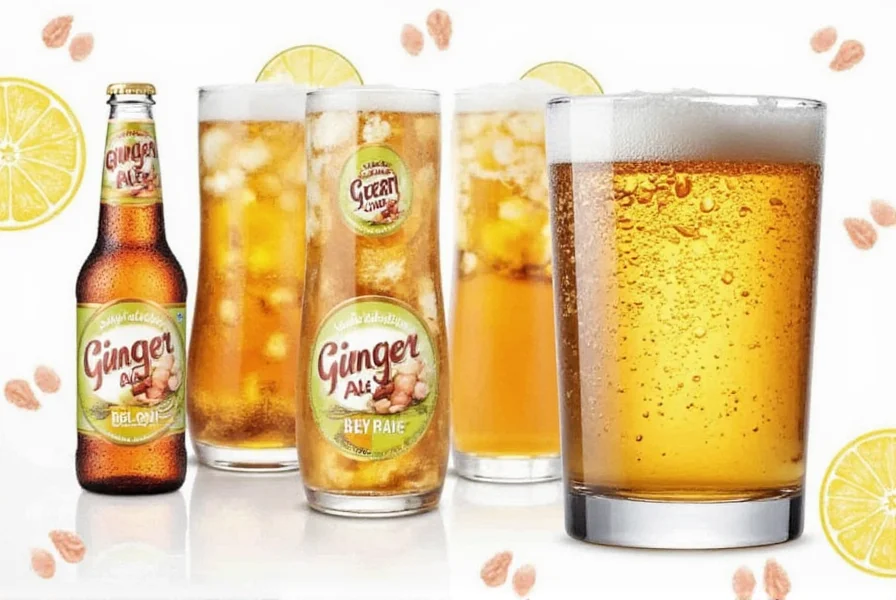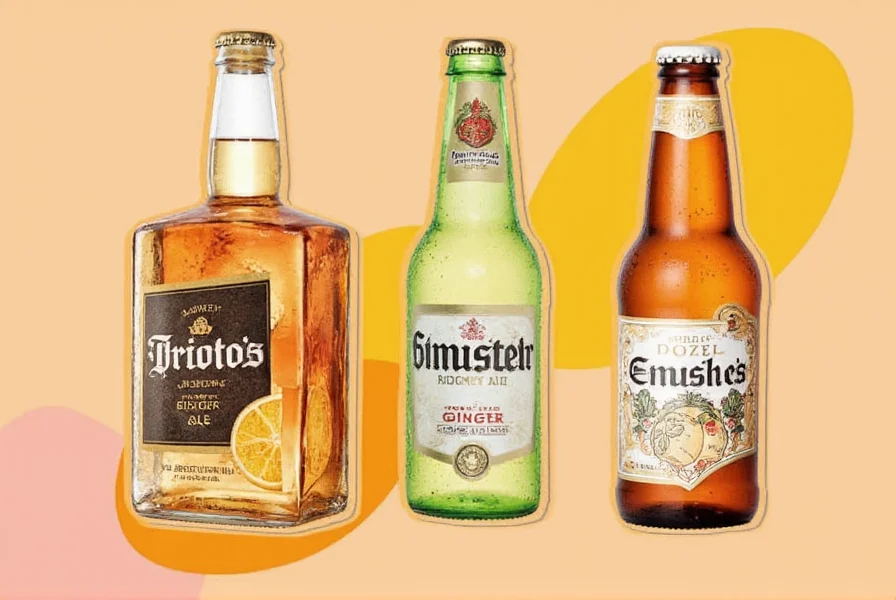Understanding the caloric content of ginger ale is essential for making informed beverage choices, especially for those monitoring their daily calorie intake or managing health conditions like diabetes. This comprehensive guide breaks down the nutritional facts you need to know about ginger ale calories across different brands and varieties.
What Contributes to Ginger Ale's Calorie Count
The primary source of calories in traditional ginger ale comes from added sugars. Unlike natural ginger root, which contains minimal calories, commercial ginger ale products typically use high-fructose corn syrup or cane sugar as sweeteners. A single 12-ounce serving generally contains 32-35 grams of sugar, which translates directly to the 124 calories found in most regular ginger ale products.
The ginger flavor itself contributes negligible calories—the real caloric impact comes from the sweeteners added to balance ginger's natural spiciness. Some premium brands use less sugar or alternative sweetening methods, resulting in slightly lower calorie counts, but the difference is usually minimal.
Calorie Comparison Across Popular Ginger Ale Brands
| Brand | Calories (per 12 fl oz) | Sugar Content | Notable Features |
|---|---|---|---|
| Canada Dry Regular | 124 | 34g | Classic formula, widely available |
| Seagram's Ginger Ale | 124 | 33g | Slightly stronger ginger flavor |
| Vernors | 130 | 36g | Higher calorie count, distinctive flavor |
| Reed's Strongest Ginger Beer | 110 | 27g | Natural ingredients, less sweet |
| Canada Dry Diet | 0 | 0g | Artificially sweetened, zero calorie |
Regular vs. Diet Ginger Ale: Calorie Differences
The calorie difference between regular and diet ginger ale is substantial. While regular versions contain approximately 124 calories per 12-ounce serving, diet varieties contain zero calories and zero sugar. Diet ginger ale achieves this through artificial sweeteners like aspartame, sucralose, or acesulfame potassium.
For individuals managing diabetes or following low-calorie diets, diet ginger ale provides the familiar ginger flavor without the blood sugar impact. However, some consumers prefer to avoid artificial sweeteners, making the regular version their choice despite the higher calorie content.
Ginger Ale Compared to Other Common Beverages
When evaluating ginger ale calories in context, it's helpful to compare with other popular beverages:
- Regular soda (12 oz): 140-150 calories
- Orange juice (12 oz): 165 calories
- Apple juice (12 oz): 165 calories
- Energy drinks (12 oz): 150-200 calories
- Sparkling water (12 oz): 0 calories
- Plain tea or coffee (12 oz): 0-5 calories
Ginger ale falls slightly below average compared to other sweetened beverages, but still represents a significant source of empty calories when consumed regularly. For those seeking ginger flavor with fewer calories, consider diluting regular ginger ale with sparkling water or choosing naturally brewed ginger beers with lower sugar content.
Health Considerations of Ginger Ale Calories
While ginger itself offers potential digestive benefits, the high sugar content in most commercial ginger ale products diminishes these advantages. The American Heart Association recommends limiting added sugars to no more than 25 grams per day for women and 36 grams for men. A single serving of ginger ale can account for nearly your entire daily recommended sugar allowance.
For individuals using ginger ale specifically for nausea relief, the sugar content may actually help settle the stomach. However, for regular consumption, the calorie and sugar content should be considered within your overall dietary pattern. Those with diabetes should be particularly mindful of ginger ale's impact on blood sugar levels.
Practical Tips for Managing Ginger Ale Calories
If you enjoy ginger ale but want to reduce your calorie intake, consider these practical strategies:
- Mix regular ginger ale with sparkling water in a 1:1 ratio to cut calories and sugar in half
- Choose smaller serving sizes (8 ounces instead of 12)
- Look for "reduced sugar" varieties that typically contain about 60-70 calories per serving
- Try naturally brewed ginger beers which sometimes have slightly less sugar
- Consider making homemade ginger ale with controlled sugar amounts
For those seeking ginger's potential health benefits without the calories, try steeping fresh ginger in hot water to make ginger tea, which contains virtually no calories while providing the ginger flavor and potential digestive benefits.

Reading Ginger Ale Nutrition Labels Effectively
When evaluating ginger ale calories, pay attention to serving sizes on nutrition labels. Some brands list nutrition facts for 8 ounces while others use 12 ounces as the standard serving. Always check the actual serving size to make accurate comparisons between products.
Also note that "ginger beer" and "ginger ale" are not nutritionally identical. Traditional ginger beers often contain more ginger and sometimes less sugar than commercial ginger ales, though this varies significantly by brand. Always check the specific nutrition information rather than assuming based on product names.

Frequently Asked Questions
How many calories are in a 12-ounce serving of regular ginger ale?
A standard 12-ounce (355ml) serving of regular ginger ale contains approximately 124 calories, with most calories coming from 32-35 grams of sugar. This represents about 6% of a standard 2,000-calorie daily diet.
Is diet ginger ale completely calorie-free?
Yes, most diet ginger ale varieties contain zero calories and zero sugar. They achieve this through artificial sweeteners like aspartame, sucralose, or acesulfame potassium, making them suitable for those monitoring calorie intake or managing blood sugar levels.
How does ginger ale compare to other sodas in terms of calories?
Ginger ale typically contains slightly fewer calories than regular cola (140-150 calories per 12 oz). A standard ginger ale has about 124 calories per 12-ounce serving compared to 140 for Coca-Cola and 150 for Pepsi. However, all these beverages provide similar amounts of empty calories from added sugars.
Can ginger ale be part of a weight loss diet?
Regular ginger ale can be included in a weight loss diet in moderation, but its high sugar content (32-35g per serving) makes it less ideal than lower-calorie alternatives. For weight loss purposes, diet ginger ale (zero calories) or diluted regular ginger ale mixed with sparkling water would be better options to satisfy cravings while minimizing calorie intake.
Does the calorie content differ between ginger ale and ginger beer?
Yes, there can be differences. Traditional ginger beer often contains slightly less sugar and therefore fewer calories than commercial ginger ale, though this varies by brand. Some craft ginger beers contain 110-120 calories per 12 oz compared to 124 for standard ginger ale. However, some modern ginger beers are actually higher in sugar and calories, so always check the specific product's nutrition label.










 浙公网安备
33010002000092号
浙公网安备
33010002000092号 浙B2-20120091-4
浙B2-20120091-4